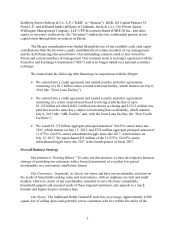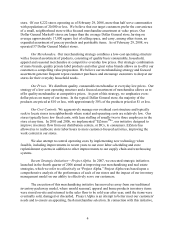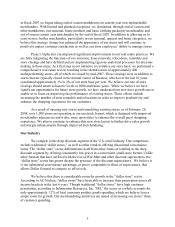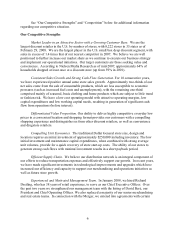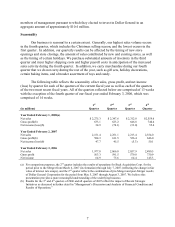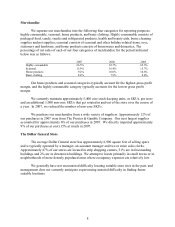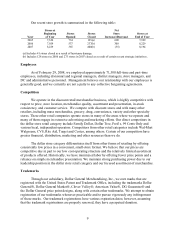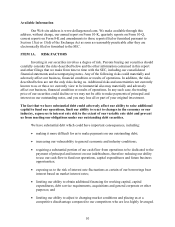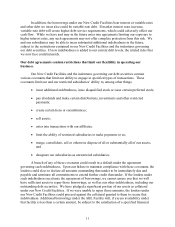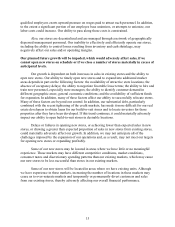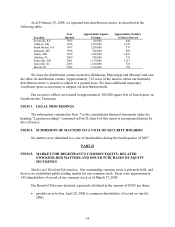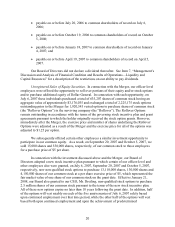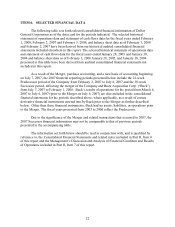Dollar General 2007 Annual Report Download - page 15
Download and view the complete annual report
Please find page 15 of the 2007 Dollar General annual report below. You can navigate through the pages in the report by either clicking on the pages listed below, or by using the keyword search tool below to find specific information within the annual report.13
especially in seasonal merchandise. Lower than anticipated sales in the Christmas selling season
would also negatively affect our ability to absorb the increased seasonal labor costs.
We face intense competition that could limit our growth opportunities and adversely
impact our financial performance.
The retail business is highly competitive. We operate in the discount retail merchandise
business, which is highly competitive with respect to price, store location, merchandise quality,
assortment and presentation, in-stock consistency, and customer service. This competitive
environment subjects us to the risk of adverse impact to our financial performance because of the
lower prices, and thus the lower margins, required to maintain our competitive position. Also,
companies operating in the discount retail merchandise sector (due to customer demographics
and other factors) may have limited ability to increase prices in response to increased costs
(including vendor price increases). This limitation may adversely affect our margins and
financial performance. We compete for customers, employees, store sites, products and services
and in other important aspects of our business with many other local, regional and national
retailers. We compete with retailers operating discount, mass merchandise, grocery, drug,
convenience, variety and other specialty stores. Certain of our competitors have greater financial,
distribution, marketing and other resources than we do. These other competitors compete in a
variety of ways, including aggressive promotional activities, merchandise selection and
availability, services offered to customers, location, store hours, in-store amenities and price. If
we fail to respond effectively to competitive pressures and changes in the retail markets, it could
adversely affect our financial performance. See “Business—Our Industry, —Competitive
Strengths, and —Competition” for additional discussion of our competitive situation.
Competition for customers has intensified in recent years as larger competitors have
moved into, or increased their presence in, our geographic markets. We remain vulnerable to the
marketing power and high level of consumer recognition of these larger competitors and to the
risk that these competitors or others could venture into the “dollar store” industry in a significant
way. Generally, we expect an increase in competition.
Natural disasters, unusually adverse weather conditions, pandemic outbreaks, boycotts and
geo-political events could adversely affect our financial performance.
The occurrence of one or more natural disasters, such as hurricanes and earthquakes,
unusually adverse weather conditions, pandemic outbreaks, boycotts and geo-political events,
such as civil unrest in countries in which our suppliers are located and acts of terrorism, or
similar disruptions could adversely affect our operations and financial performance. These events
could result in physical damage to one or more of our properties, increases in fuel (or other
energy) prices, the temporary or permanent closure of one or more of our stores or distribution
centers, delays in opening new stores, the temporary lack of an adequate work force in a market,
the temporary or long-term disruption in the supply of products from some local and overseas
suppliers, the temporary disruption in the transport of goods from overseas, delay in the delivery
of goods to our distribution centers or stores, the temporary reduction in the availability of
products in our stores and disruption to our information systems. These events also can have
indirect consequences such as increases in the costs of insurance following a destructive


